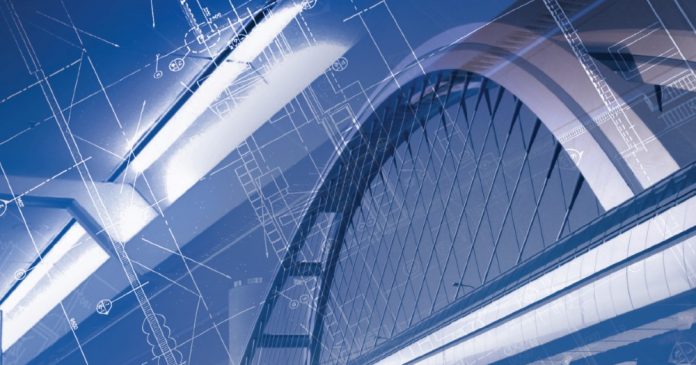Material Engineering deals with the study of material and relates them to their properties. It is for this reason that necessity arises to study the mechanical properties of materials. Its affiliate; chemical elements give materials their structure and determine their properties as well. Knowing mechanical properties of materials will help you know how it contributes to strength and ability of a material to be molded to a desirable shape.

Moreover, your ability to complete an engineering product or application will depend on your understanding of mechanical properties of materials. Most of the material you will encounter in production will mostly be in the solid state and being fluent in all their properties will go a long way to facilitate an engineering success.
Mechanical Properties of Engineering Materials
Mechanical properties of materials refer to the properties associated with the ability of the material to be able to withstand mechanical forces and load. It is the measure of strength and lasting characteristic of a material. Mechanical properties are of great importance because you have to be familiar with each of the flawless design of tools, structures, and machines.
Mechanical properties are structure sensitive, and it counts a lot in how your engineering product will eventually hold up. Mechanical properties depend not only on crystalline structure and bonding forces but also behavior and nature which lie in the imperfections within the crystal.
10 Mechanical Properties of Engineering Material
- Refers to the ability of a material to resist external stress which might prompt it to change shape. The various measures of hardness are:
- Scratch hardness. The material can withstand a scratch from the external force on its outside surface layer.
- Rebound hardness. Also referred to as dynamic hardness and is determined by the height of bounce of a diamond-tipped hammer when dropped from a fixed height of the material.
- Indentation hardness. Refers to the ability of a material to withstand a dent from a hard external punch or sharp object.
- Strength. This property enables the material to withstand deformation or breakdown from an external force. Strength will hold an engineering product together and makes any application work under different mechanical forces without deformation. By understanding this concept, you can relate to how stress and strain can affect your engineering product.
- Creep and slip. Creep indicates a tendency of the material to deform permanently and move slowly from a mechanical exertion of external force. Creep as the name suggests forms overtime due to overexposure to a massive load of mechanical stress.
You can yield creep to substantial levels but in cases where the material is a subject of heat for a long time producing becomes effortless with speeding up deterioration. Slip is a plane with a great density of atoms in the material.

- Is the ability of materials to absorb energy during elastically deformation by applying stress? Removing stress makes material lose energy. When material maximally absorbs energy without permanently deforming, it has achieved proof resilience.
This maximum energy, when absorbed per unit volume, is referred to as modulus of resilience with joule/m as its unit measure. You can determine the modulus of resilience by integrating stress-strain curve from zero to an elastic limit.
- Fatigue is when material weakens after continuous overloading. This property explains the cracks you see in a material. When you load material past a certain threshold or below the strength of the material and above its yield stress limit, you will start to see cracks forming at the material’s grain boundaries or interfaces.
Although some cracks are microscopic for your eyes to see, fatigue will manifest past tensile strength limit nonetheless. You will start to see signs of fatigue when the crack reaches maximum limit followed by the structure getting fractured.
Knowing how this element shapes up an engineering product will save you the misfortune of fatigue cracks. For instance, square holes and sharp corners are bound to result in fatigue.
- Ductility. Ductility indicates how easily deformity takes its toll on solid material that is under stress past tensile strength limit. How far you can stretch material into a wire dictates ductility.
Ductility is a borrowed concept from plasticity, and its similarity as a mechanical property is that it is temperature dependent. An increase in temperature causes the flexibility of material to increase. Hence it can easily break under high temperatures.
- Brittleness indicates how stress or force from a load can easily fracture your product. It doesn’t matter the amount of strain because a brittle object will crack under pressure or an overload.
Brittleness and ductility have temperature dependency in common. You ought to understand the how the metal used for an engineering product holds up under high and low temperatures. During low temperatures, material that tends to be ductile becomes brittle and brittle material becomes ductile on high temperatures.
- This property of solid material expresses how materials get deformed under intense stress. Like flexibility, malleability derives material from a distinct form, in this case, a thin sheet. You can measure malleability against the ability of the material to be formed by hammering or rolling from a thin sheet.
Getting to know malleability prospects of your engineering material will give your knowledge on action to take before cold and warm temperatures. Malleability is temperature dependent hence it increases with a rise in temperature.
- This feature is the ability of materials to achieve hardness through heat treatment processing. You can measure hardenability by reviewing the depth at which material goes before becoming hard.
Hardenability like length is similar because they both have Meter as an SI Unit. The hardenability of material translates to its weld-ability.
- Toughness has a plasticity flair to it. When you expose the material to the temperature, or instead it absorbs energy, it is bound to get plastically deformed. This trait is particular with material that has plastic. You can determine the numerical value of your material’s toughness by calculating the amount of energy per unit volume.
To choose a material that will not stress you out for cracking under tensile stress, it has to be ductile as well as reliable.

Engineering material is mostly spaced out from buildings to aircraft. Understanding their properties will go a long way in sustainability, most especially mechanical properties. Engineering has to be flawless in design with precision and getting affiliated with the mechanical properties of your engineering products or applications will earn you long-term resilience.











